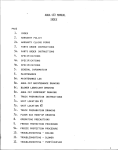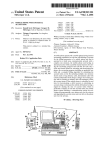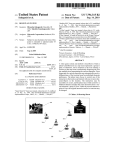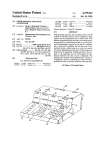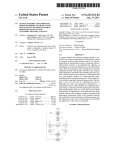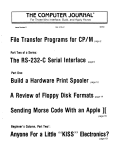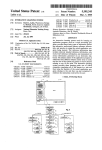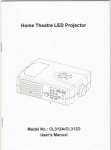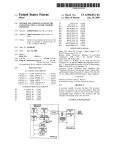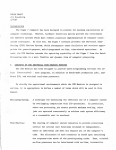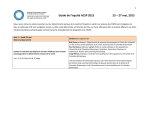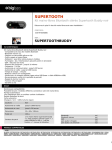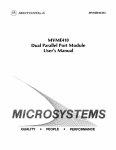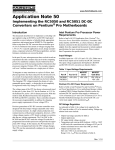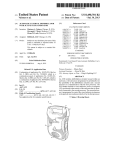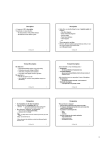Download Method and apparatus for creating and playing soundtracks in a
Transcript
US007331869B2
(12)
(54)
(75)
73
(
United States Patent
(10) Patent N0.:
Blanco
(45) Date of Patent:
METHOD AND APPARATUS FOR CREATING
5,459,487 A
10/1995 Bouton
5,475,835 A *
12/1995 Hickey .................. .. 707/104.1
GAMING SYSTEM
5,489,103 A *
2/1996
5,550,575 A
8/1996 West et a1.
5,551,701 A
9/1996 Bouton et a1‘
Inventor:
_
Victor Keith Blanco, Bothell, WA (US)
'
M_
ssignee.
f C
UISCI‘OSO t
(
(*)
Feb. 19, 2008
AND PLAYING SOUNDTRACKS INA
A
)
US 7,331,869 B2
Notice:
_
R d
orporatlon,
d WA
e mon ,
)
5,557,541 A *
9/1996
5,558,339 A
9/1996 Perlman
5,587,546 A *
Subject to any disclaimer, the term of this
patent is extended or adjusted under 35
Okamoto ................... .. 463/29
5’592’609 A
5592651 A
Schulhofet a1. ............ .. 700/94
12/1996 Kato et a1. .................. .. 84/609
1/ 1997 Suzuki et a1‘
l/ 1997 Rackman
U.S.C. 154(b) by 0 days.
(21) Appl. No.: 11/068,551
(22)
Filed?
Feb- 28, 2005
(65)
FOREIGN PATENT DOCUMENTS
Prior Publication Data
US 2005/0159218 A1
(60)
(Continued)
CA
2201276
9/1998
Jul. 21, 2005
Related US. Application Data
Continuation of application No. 10/778,643, ?led on
(Continued)
Feb. 12, 2004, noW Pat. No. 6,878,067, Which is a
division of application NO- 09/802,661: ?led on Mar9, 2001, noW abandoned.
OTHER PUBLICATIONS
Nov. 13, 2000 dailyradarcom review of “Metropolis Street Racer”.*
(Continued)
51
I t. C].
( ) An63F
13/12
(2006.01)
us. Cl. .......................... .. 463/35; 463/40; 463/41;
Zr”_'€”yiimmi’?er*%/°Ib;g
Elie/Z131“?
S“ a”
mmmeri a W
'
0e
(52)
463/42
(58)
(57)
ABSTRACT
Field of Classi?cation Search ................ .. 463/35,
463/25, 29, 36439, 4(L42, 43; 369/63, 30.01;
446/397; 705/14; 707/
1, _ ?l f
1
See app lcanon
(56)
e or Comp ete Seam
A gaming system includes a game console that executes an
application that creates and plays soundtracks through the
h’h_
lstory'
gaming system. The application alloWs a user to create
References Cited
soundtracks by copying audio tracks from one or more audio
sources. A user-created soundtrack can be associated With a
U.S. PATENT DOCUMENTS
4,296,476 A
4,432,067 A
4,905,280 A
10/1981 Mayer et a1.
2/1984 Nielsen
2/1990 Wiedemer
5,362,068 A *
11/1994
5,382,983 A
particular game such that the user-created soundtrack is
played during execution of the game instead of the game’s
default soundtrack. During execution of a game, a user may
change the soundtrack being played.
Liu ........................... .. 463/44
18 Claims, 12 Drawing Sheets
1/1995 Kwoh et a1.
{-1100
GAMING SYSTEM RETRlEVES THE SELECTED
A0010 TRACKS AND ADDS THE AUDIO
TRAeKs Yo THE SOUNDTRACK
Ann MORE AuDlo TRACKS
to THE SOUNDYRACK?
No
1115
GAMING SYSTEM RETURNS 10 THE Muslc
COLLECTION MENU
US 7,331,869 B2
Page 2
U.S. PATENT DOCUMENTS
6,928,433 B2
6,935,952 B2
7,019,205 B1
8/2005 Goodman et al.
8/2005 Walker et al.
3/2006 Fujisawa 6161.
5598276 A
V1997 COOkSOH er 91-
5,611,066 A *
3/1997 Keele et al. .............. .. 711/100
2001/0004609 A1
6/2001
Walker et a1‘
5613909 A *
3/1997
2001/0007824 A1*
7/2001
Fukuda ........................ .. 463/7
5,624,316 A
4/1997 Roskowski et al.
2002/0077177 A1
6/2002 Elliott
5,634,849 A
6/ 1997 Abecassis
2002/0121297 A1 *
5,649,862 A
7/1997 Sakaguchi er 91-
2002/0152377 A1
5,659,742 A *
Stelovsky -------------------- -- 463/1
8/1997 Beattie et al. ......... .. 707/104.1
9/2002 Li et a1. .................. .. 135/20.1
10/2002 Bauman
2003/0008715 A1
1/2003
Huber et a1‘
2003/0077557 A1 *
4/2003
Okamoto .............. .. 434/307 A
Burgoon ................... .. 707/203
2003/0078097 A1*
4/2003
Okamoto _
5,716,273 A
5,726,909 A *
5,735,744 A *
2/1998 Yuen
3/1998 Krikorian .................. .. 700/94
4/1998 Okamoto ................... .. 463/40
2003/0227473 A1*
2004/0005924 A1
2004/0162137 A1
5,745,574 A
5,752,883 A
5,791,992 A
4/1998 Muftic
5/1998 Butcher et al.
8/1998 Crump et al.
5680323 A *
10/ 1997
5,706,510 A *
1/1998
Barnard ---- --
--
FOREIGN PATENT DOCUMENTS
5,797,752 A *
8/1998 UmeZawa ............. .. 434/307A
DE
5,798,921 A *
8/1998 Johnson et al.
EP
5,841,979 A *
5,876,286
5,878,134
5,892,900
5,896,125
A
A
A
A
11/1998
3/1999
3/1999
4/1999
4/1999
10046437
0 889 420 A2 *
4/2002
1/1999
Schulhof et al. .......... .. 709/237
EP
0889420
1/1999
Lee
Handelman et al.
Ginter et al.
NiedZwiecki
EP
EP
JP
JP
1035706
1126425
3135636
7160467
9/2000
8/2001
6/1991
6/1995
9/1995
5,915,238 A *
6/1999 Tjaden ..................... .. 704/260
JP
7249283
5,917,256 A
6/1999 Broadbent, 11
JP
8016554
1/1996
5,918,223 A *
6/1999 Blum et al. .................. .. 707/1
JP
10243015
9/1998
463/41
JP
10327147
12/1998
Tower ..................... .. 369/30.3
JP
11207034
8/1999
10/1999 Looney et al.
10/1999 Cragun et al.
11/1999 Lee
JP
JP
JP
11237941
11317061
2000149386
8/1999
11/1999
5/2000
5,935,005 A *
8/1999 Tsuda et al.
5,946,278 A *
8/1999
5,969,283 A
5,973,683 A
5,978,920 A
5,980,261 A *
11/1999 Mino et al. ........... .. 434/307 A
JP
2000157724
6/2000
5,993,319 A
11/1999 Aoyama
JP
2000228051
8/2000
6,001,015 A
12/1999 Nishiumi et al.
JP
2000511378
8/2000
6,005,597 A *
12/1999 Barrett et al. ............... .. 725/46
JP
2000348466
12/2000
6,009,433 A
12/1999 Kurano et al.
WO
WO9714151
4/1997
6,011,758 A *
6,012,068 A *
1/2000 Dockes et al. ......... .. 707/104.1
1/2000 BoeZeman et al. .... .. 707/104.1
W0
WO
WO 98/56179
WO0033572
12/1998
6/2000
6,025,869 A
2/2000 Stas et a1.
W0
WO 00/40027
7/2000
6,031,795 A *
6,093,880 A *
2/2000 Wehmeyer ............. .. 369/3028
7/2000 Arnalds .................. .. 84/464 R
W0
W0
W0 00/51036
W0 ()1/05477 A2
55/2000
1/2001
6,115,079 A
9/2000 McRae
W0
W0 01/081218
2/2001
6,119,116 A *
6,122,617 A *
9/2000 ROSG ......................... .. 707/10
9/2000 Tjaden ..................... .. 704/260
W0
W0 0l/84768
II/ZOOI
Yankowski
463/29
12/2003 Shih e161. ................ .. 345/716
1/2004 Watatbe et 31‘
8/2004 Eliott
6,128,255 A *
10/2000
6,128,625 A *
10/2000 Yankowski .
............ .. 369/30.06
6,147,940 A *
11/2000 Yankowskl ............ .. 369/30.06
6’l6l’l85 A
12/2000 Guthne et 31'
. 707/104.1
OTHER PUBLICATIONS
Jan‘ 19, 2001 ign‘com review Of“MetrOp0liS Street Racer”,
“Metropolis
Street
Chiu et al. ................ .. 715/736
Racer”
manual
downloaded
from
6,181,336 B1*
1/2001
6,189,096 B1
6,224,485 B1
6,230,320 B1
20001 Haveny
50001 Dickinson et al‘
50001 Gakumura
replacementdocscom, Jan. 3, 2006.
Search report, WO 01/83055 A3‘, PCT/US01/-14106.*
U.S. Appl. No. 60/252,760, publlshed as pr1or1ty document for WO
*
6,280,327 B1
6,280,329 B1
6,298,441 B1
8/2001 Leifer et a1.
80001 Kondo et al‘
10/2001 Handelman et a1.
01/83055 A3’ KNEW/14106“
US. Appl. No. 60/201,163, publlshed as pr1or1ty document for WO
01/83055 A3, PCTMSOI/ 14106~*
633093301
6 299 535 B1
10/2001 Tamika
Sam,
Search report, UK
WOpatent
2006/033941
GB 2 276A1,
971 A, application 9404818.8.*
6,312,336 B1
6,320,320 B1
11/2001 Handelman et a1,
11/2001 Bailey, 111 et a1,
Wikipedia article “Metropolis Street Racer,” downloaded from
http://en.wikipedia.org/wiki/MetropolisiStreetiRacer, Jul. 9th,
6,393,430 B1*
5/2002 Van RyZin ............. .. 707/104.1
2006*
6,396,531 B1
5/2002 Gerszberg et 31,
User manual for “Metropolis Street Racer,” downloaded from
6,464,585 B1
6,468,160 B2
10/2002 Miyamoto et a1,
10/2002 Eliott
6,488,508 B2 *
12/2002 Okamoto .............. .. 434/307 A
6,520,890
6,535,269
6,599,194
6,601,171
6,712,704
B2
B2
B1
B1
B2
2/2003
3/2003
7/2003
7/2003
3/2004
Hsu
Sherman et 61
Smith et a1~
Carter et 61
Eliott
www.replacement.docs.com, Jul. 96‘, 2006.*
PlayStation 2 instruction manual, © 2003 Sony.*
“The 64DD: Nintendo’s Disk Drive,” Jan. 28th, 1998, ign.com.*
“IGN64’s Ultimate 64DD FAQ,” Dec. 15th, 1999, ign.c0m.*
“What is the 64DD?”, Sep. 17th, 1997, ign.com.*
User manual for “Metropolis Street Racer,” downloaded from
www.replacementdocs.com, Jul. 9th, 2006.*
Review of “Metropolis Street Racer,” dailyradar.com, Nov. 13th,
6,716,102 B2
6,769,989 B2
4/2004 Whitten et al.
8/ 2004 Smith et al.
2000*
Review of “Metropolis Street Racer,” downloaded from dailyradar.
6,875,021 B2 *
4/2005
com, Nov. 13th, 2000*
Okamoto .............. .. 434/307 A
US 7,331,869 B2
Page 3
“DFU Verbindung herstellen” FAQ, Online! XP002318226
Takahashi; “Microsoft goes gaming. (product Development)” Elec
Retrieved from the Internet: URL: WWW. puretec.de> retrieved on
2000! Whole document.
tronic Business May 2000, 2 pages.
Todd MoWatt; “Indrema: Linux-Based
Gamecenter.com Aug. 11, 2000, 2 pages.
Sherman S A et al.: “Secure NetWork Access Using Multiple
Applications of AT&T’s Smart Card” AT&T Technical Journal,
Console”
CNET
Schneier, “Applied Cryptography,” John Wiley & Sons, Second
American Telephone and Telegraph Co. NeW York, US, vol. 73, No.
5. Sep. 1, 1994, pp. 61-72, XP000475912 ISSN: 8756-2324 p. 67.
“CES: Bill Gates zeigt die Xbox” golem.de ‘Online! Jan. 6, 2000
Retrieved from the internet: url: http://dynl.golem.de/cgi-bin/
usisapi.d11/forprint??id11561> retrieved Jun. 18, 2004.
“PlayStation 2 Instruction Manual” ‘Online! 2000 Sony Computer
Entertainment Retrieved from the internet: url:WWW.playstation.
Edition, 1996, pp. 32 and 33.
O?‘icial Notice of Rejection mailed
Patent Application No. 2002-064292,
O?‘icial Notice of Rejection mailed
Patent Application No. 2002-059394,
O?‘icial Notice of Rejection mailed
Patent Application No. 2002-048648,
com. retrieved on Jun. 18, 2004.
“TV Incapable of Displaying Images”, Nikkei Electronics, May 22,
2000 Issue, Japan, Nikkei Business Publications, Inc., May 22,
PS2 Frequently Asked Questions All Playstation2 ‘Online! Jul. 29,
2000 Retrieved from the Internet: URL:http://WWW.allps2.net/
ps2ifaq.html> retrieved on Jun. 18, 2004.
“IIIIGI'VIGWSiJOhII Gildred of Indrema on the L600” Planet
GeForce IntervieW by Christopher “Razor” Gordon Oct. 19, 2000 5
pages.
Daily Radar.com; Web page printout Nov. 13, 2000, RevieW of
“Metropolis Street Racer” game 5 pages.
Greg Suarez; “Sony PlayStation 2” The Digital Bits ‘Online! Nov.
15, 2000 retrieved from the internet: URL:http://WWW.thedigitalbits.
com/revieWs/ps2/sonyps2*.html> retrieved Jun. 18, 2004.
Links 386CD; 1995 Access SoftWare Inc. pp. 1-87.
Melissa J Perenson; “Play Back Media Your Way” PC World
‘Online! Jun. 1, 2000 Retrieved form the Internet: url:http://WWW.
pcWorld.com/resource/printable/0aid1700100.asp. retrieved on Jul.
8, 2004.
Paul Thurrott; “WindoWs Media Player 7 revieWed” Winsupersite
‘Onlilne! Aug. 15, 2000 Retireved formt he internet: URL:http://
WWW.Winsupersite.com/revieWs/Wmp7.asp> retrieved on Jun. 18,
2004.
Sega Enterprises; User Manual “Metropolis Street Racer” game
2000 18 pages.
on Mar. 22, 2006, Japanese
12 pages, includes references.
on Mar. 22, 2006, Japanese
17 pages, includes references.
on Mar. 28, 2006, Japanese
12 pages, includes references.
2000, No. 770, pp. 141-158.
“PlayStation 2, Dreamcast, and 64DD: Aiming at Increasing Cus
tomers by Integration With the Net”, Nikkei Trendy, No. 169, Japan,
Nikkei Home Publishing Inc., Jul. 25, 2000, Extra Edition/Serial
No. 169, pp. 16-19.
“XBOX, ASCII, the March Issue, 2001 (The Anatomy of XBOX
Which is Inaccessable to the Readers of Game Magazines: The
Latest Information of the War for TV VieWers at the Present Stage
in 21st Century”, ASCII Corporation., Mar. 1, 2001, vol. 25, No. 3,
pp. 249-264.
Hall et al., “Remote Electronic Gambling” Computer Security
Applications Conference, 1997. Proceedings, 13th Annual Dec.
8-12, 1997, pp. 232-238.
Jimbo et al., “Optimal Authentication Systems and Combinatorial
Designs”, Information Theory, IEEE Transactions on vol. 36, Issue
1, Jan. 1990, pp. 54-62.
Nacira et al., “Secured Net-Banking by /spl thera/-VIGENERE in
Syverson’s Protocol”, Computer Systems and Applications, 2005.
The 3rd ACS/IEEE International Conference on 2005, p. 67 [But is
of Multiple Pages].
Stallings; Cryptography and netWork security: Principles and Prac
“The Game Manual Sega Dreamcast”, Sega of America, Inc.,
tice Second Edition Prentice Hall 1999; pp. 330 and 333-338.
Press Pass “Xbox to Deliver Ultimate Console Gaming Experience”
San Jose Ca Mar. 10, 2000, 3 pages 2001.
c/net NeWs.com; “US version of Playstation2 to have modem hard
WWW.sega.com. 30 pages.
drive” By Bloomberg NeWs Apr. 14, 2000 2 pages.
IGN.com; “Waht is the 64DD?” Sep. 17, 1997 9 pages.
IGN.com; “The 64DD: Nintendo’s Disk DriveiEverything you
ever Wanted to knoW about the N64’s ?rst major add-on” Jan. 28,
1997, 7 pages.
IGN.com; “The 64DD Connection-Here’s hoW the 64DD and the
Nintendo 64 connect” Oct. 20, 1999, 5 pages.
IGN.com; “IGN64’s Ultimate 64DD FAQ- Everything you ever
Wanted to knoW about the upcoming disk drive add-on” Updated:
12/13 Dec. 15, 1999, 12 pages.
Rick Lehrbaum; “Linux fuels game console plus” ZDNetUK NeWs
Linux Devices.com Special to ZDNet Jul. 7, 2000, 3 pages.
Bolosky, et al., “Single Instance Storage in WindoWs 2000”, Usinex
Association, Proceedings of the 4th USENIX WindoWs Systems
Syposium, Aug. 3-4, 2000, Seattle, WA, 15 pages.
Sega of America, Inc., ““The Game Manual Sega Dreamcast’”’,
WWW.sega.com, 30 pages.
Bolosky, et al., “Single Instance Storage in WindoWs 2000”, Usenix
Association, Proceedings of the 4th USENIX WindoWs Systems
Syposium, Aug. 3-4, 2000, Seattle, WA, 15 pages.
Schneier, B. “Applied Cryptography”, Applied Cryptography. Pro
tocols, Algorithms and Source Code in C, NeW York, John Wiley &
Sons, US, 1996, pp. 574-577.
Getting Started WindoWs98, 2nd Edition, Microsoft Corporation,
pp. 80-81 and 87-90.
* cited by examiner
U.S. Patent
Feb. 19, 2008
102
108
Sheet 1 0f 12
US 7,331,869 B2
120
U.S. Patent
Feb. 19, 2008
Sheet 2 0f 12
US 7,331,869 B2
r 100
f
214 _
GAME CONSOLE 10_
l———
1
—
—
—
—
—
—
_
__, _
CENTRAL PROCESSING UNIT 2_QQ
I
LEVEL 1 CACHE
M
I
_
a
_
_
_
_
_
3D GRAPHICS \
VIDEO
PROCESSING
ENCODER
UNIT m
2
LEVEL 2 CACHE
£2
MEMORY a
CONTROLLER
m
PROCESS'NG
\ UNIT E
&
\
I [
|
|
AUDIO
2_2_§ |
CODEC
E
|
|
A—?
l
|
I
AN
PORT
w
AUDIO
FLASH ROM
MEMORY
I
‘
:
l
I
__‘____‘
RAM MEMORY M
k
|
USB HOST
NW
CONTROLLER
l/F
m
I
E :
I
<
Q
if ,r
ATA CABLE
216
Q
>
PORTABLE
MEDIA DRIVE
HARD DISK
DRIVE
m
m
SYSTEM POWER
SUPPLYZQQMODULE
FAN u
260
U! APP
\
/_ 244
DUAL
CONTROLLER
PORT
SUBASSEMBLY
FRONT PANEL
V0
SUBASSEMBLY
DUAL
CONTROLLER
PORT
SUBASSEMBLY
240(1)
H
240(2)
“
|—‘
CONTROLLER
[ 104(1)
1‘
|_
“I
CONTROLLER
1‘
112
‘
[ 104(3)
114
MEM. UNIT
140(5)
,
2
MEM. UNIT
\_
140(6)
‘
CONTROLLER
[ 104(4)
T 140
7)\
\ ‘
\
140(1)\ 140(2) 1 140(4)
\—I
CONTROLLER
[ 104(2)
140(3)\
\ ‘
MEM. UNIT
J
1‘
\
‘
MEM. UNIT
L
140(8)
U.S. Patent
Feb. 19, 2008
Sheet 3 0f 12
US 7,331,869 B2
r 300
KEY
DISTRIBUTION
CENTER
306
304(1) \
[E]
E!
I:
Illllll???
/ nunuuuu \
ONLINE SERVICE
302
.
304(8) \
208 \
/"“
\
/
\
ONLINE SERVICE
I
HARD DISK
/
\
DRIVE
\
/ 100(1)
\
REMOTE
f 140
STORAGE
PORTABLE
MEDIUM
108/
MEMORY
UN|T(S)
/
104
\ 308
U.S. Patent
Feb. 19, 2008
Sheet 4 0f 12
US 7,331,869 B2
r 400
402
MAIN MENu
V
MEMORY
406
408 q
(- 41s
SETTINGS
GAMES
COLLECTION
MUSIC
COLLECTION
MOVIE
COLLECTION
Y
‘
‘
GAMES PLAY
AREA
410J
MUSIC PLAY
AREA
412J
Q9. 4
MOVIE PLAY
414J
U.S. Patent
Feb. 19, 2008
Sheet 5 0f 12
US 7,331,869 B2
r 500
504 &
508
510
502
506
512
W 5
W
U.S. Patent
Feb. 19, 2008
Sheet 6 0f 12
US 7,331,869 B2
f 600
r 604
PRESENT GAMES
COLLECTION MENU
r 608
PRESENT MUSIC
COLLECTION MENU
f 612
PRESENT MOVIE ]
PLAYER
f 616
MEMORY
SELECTED?
PRESENT MEMORY]
COLLECTION MENU
r 620
PRESENT SETTINGS
COLLECTION MENU
U.S. Patent
Feb. 19, 2008
Sheet 7 0f 12
US 7,331,869 B2
r 700
702
SOUNDTRACK 1
SOUNDTRACK 2
SOUNDTRACK 3
SOUNDTRACK 4
SOUNDTRACK 5
SOUNDTRACK 6
SOUNDTRACK 7'v
DAVID BOWIE
ALBUM NAME:
EARTHLING
TRACKS: 14
TOTAL TIME: 45:53
r 800
DAVID BOWIE
U.S. Patent
Feb. 19, 2008
Sheet 8 0f 12
US 7,331,869 B2
choose a
snund'rr'acu
SOUNDTRACK 1
NE!
SOUNDTRACK
[SOUNDTRACK Z i
904
SOUNDTRACK 3
‘SOUNDTRACK 4 )
U.S. Patent
Feb. 19, 2008
1006
Sheet 9 0f 12
AUDIO
CD 2
GAME
DISC 1
US 7,331,869 B2
1008
1004
1010
AUDIO
CD 1
GAME
DISC 2
1002
D
SOUNDTRACK
1018
1012
AUDIO
DVD 2
WMA FILE 1
1014
AUDIO
DVD 1
759, I0
1016
U.S. Patent
Feb. 19, 2008
Sheet 10 0f 12
1102 Y GAMING SYSTEM CREATES A NEW
SOUNDTRACK FII_E
US 7,331,869 B2
]
V
1104
USER IS PRESENTED WITH A LIST
OF AUDIO SOURCES
1106
V
V
a
1108 -\
1
USER SELECTS AN AUDIO SOURCE
UsER Is PRESENTED WITH A LIST OF
AUDIO TRACKS FROM THE AUDIO SOURCE
1110 \’
USER SELECTS ONE OR MORE
AUDIO TRACKS FROM THE LIST
1 112
GAMING SYSTEM RETRIEVES THE SELECTED
AUDIO TRACKS AND ADDS THE AUDIO
TRACKS TO THE SOUNDTRACK
1114
ADD MORE AUDIO TRACKS
TO THE SOUNDTRACK?
1116
GAMING SYsTEM RETURNS TO THE MUSIC
COLLECTION MENU
f 1100
U.S. Patent
Feb. 19, 2008
Sheet 11 0f 12
US 7,331,869 B2
COPYING £33“
HLJUIEI [2J1
guumn'mncu :1
Artist Home
12 ‘Tracks
? Trucks
23:54
45:46
TRACK 1
TRACK 2
TRACK 3
3:38
1:55
2:2?
TRACK 1
TRACK 2
TRACK 3
3:
1=ss
2:27
TRACK 4
3:43
TRACK 5
TRACK 6
TRACK 7
3:58
4:24
6:18
TRACK 5
TRACK 6
TRACK 7
3:58
4:24
6:
TRACK 8
TRACK 9
3:92
2:15
TRACK 19
TRACK 11
TRACK 12
2:36
3:2?
4:14
U.S. Patent
Feb. 19, 2008
Sheet 12 0f 12
1302
US 7,331,869 B2
f
1300
L USER SELECTs A GAME TO PLAY 1
1304
DOES THE SELECTED
YES
GAME HAVE A USER-ASSOCIATED
SOUNDTRACK?
1306
LAUNCH THE SELECTED GAME
1308
AND PLAY THE USER
ASSOCIATED SOUNDTRACK
PRESENT THE USER WITH AN OPTION TO
SELECT A SOUNDTRACK OR PLAY GAME
USING THE DEFAULT SOUNDTRACK
1310
DEFAULT
NEW SOUNDTRACK OR
DEFAULT SOUNDTRACK?
1312
LAUNCH THE SELECTED GAME
1314
PRESENT THE USER WITH AVAILABLE
SOUNDTRACKS
1316
LAUNCH THE SELECTED GAME AND PLAY
THE SELECTED SOUNDTRACK
]
AND PLAY THE DEFAULT
GAME SOUNDTRACK
US 7,331,869 B2
1
2
METHOD AND APPARATUS FOR CREATING
AND PLAYING SOUNDTRACKS IN A
GAMING SYSTEM
SUMMARY
The method and apparatus described herein provide the
ability to create, edit, and play soundtracks in a gaming
system. The soundtracks include one or more audio tracks
copied or retrieved from one or more audio sources (such as
an audio CD, an audio DVD, a game disc, or an online
RELATED APPLICATIONS
This application is a Continuation of co-pending applica
tion Ser. No. 10/778,643, ?led Feb. 12, 2004, entitled
hard disk drive in the gaming system and can be played back
“Method and Apparatus for Creating and Playing
through the gaming system. Additionally, soundtracks stored
Soundtracks in a Gaming System”, and incorporated herein
by reference. That application is a divisional of co-pending
application Ser. No. 09/802,661, ?led Mar. 9, 2001, entitled
in the gaming system can be associated With a particular
game such that the soundtrack is played (instead of the
game’s default soundtrack) While the game executes. This
source containing audio ?les). Soundtracks are stored on a
“Method and Apparatus for Creating and Playing
system alloWs the user to choose or create a soundtrack
Soundtracks in a Gaming System”, Which is also incorpo
rated herein by reference.
based on the user’s audio preferences, and does not limit the
user to the game soundtrack provided by the game devel
oper.
In the described implementation, the gaming system
COPYRIGHT NOTICE
includes a game console and one or more controllers. The
game console is equipped With a hard disk drive, a portable
A portion of the disclosure of this patent document
contains material Which is subject to copyright protection.
20
cation stored on the hard disk drive is loaded When the game
console is poWered on. The console application presents a
menu hierarchy that includes various soundtrack creation
The copyright oWner has no objection to the facsimile
reproduction by anyone of the patent document or the patent
disclosure, as it appears in the Patent and Trademark Office
patent ?le or records, but otherWise reserves all copyright
25
rights Whatsoever.
TECHNICAL FIELD
This invention relates to gaming systems and, more
particularly, to the creation of soundtracks using a gaming
system and to the playback of soundtracks using a gaming
media drive, and broadband connectivity. A console appli
30
and soundtrack selection menus. The soundtrack creation
menu alloWs the user to select various audio tracks to be
included in a soundtrack. The soundtrack selection menu
alloWs the user to select a soundtrack for playback or for
associating With a particular game such that the soundtrack
is played When the particular game is launched.
When a game is launched, the gaming system determines
Whether the launched game has a user-associated
soundtrack. If so, the user-associated soundtrack is retrieved
from the hard disk drive and played While the game is
system.
executed. If the launched game does not have a user
associated soundtrack, the gaming system either 1) plays the
BACKGROUND
35
2) alloWs the user to select the soundtrack to be played While
the game is executed. The user of the gaming system can
Gaming systems currently available on the market are
capable of playing game discs, music CDs, and movie
DVDs from a disc drive. For example, the Playstation® 2
gaming system from Sony Corporation provides the ability
to play games, music, and video titles from a disc inserted
in the console. Certain gaming systems also provide a
modem or other mechanism for establishing an online
connection to facilitate online gaming.
default game soundtrack provided by the game developer; or
40
change soundtracks in the middle of a game by pausing the
game and selecting a different soundtrack. The gaming
system then resumes execution of the game and begins
playing the neWly selected soundtrack.
BRIEF DESCRIPTION OF THE DRAWINGS
45
FIG. 1 illustrates a gaming system that implements a
a game soundtrack. The game soundtrack is stored on a disc
uniform media portal architecture.
FIG. 2 is a block diagram of the gaming system.
along With the game (i.e., a game disc). This game
soundtrack includes music that is created by or selected by
the game developer. If the user of the gaming system dislikes
FIG. 3 illustrates a netWork gaming system in Which the
FIG. 1 gaming system is connected via a netWork to other
consoles and services.
Current gaming systems play games that typically include
50
the game soundtrack or groWs tired of the same soundtrack
user to launch the game from the game disc, and then replace
the game disc With an audio CD that is played by the gaming
system While the game is executed. HoWever, if the game
55
requires additional information from the game disc (e.g.,
system and replaced With the audio CD. This sWitching of
discs disrupts the gaming experience and is a nuisance to the
user.
The system and method described herein addresses these
limitations by providing a mechanism to create soundtracks
in a gaming system and to select a soundtrack to be played
While executing a particular game.
FIG. 5 illustrates a graphical user interface depicting the
main menu of the gaming system.
FIG. 6 is a How diagram of the main menu navigation
process that is performed after the gaming system is initial
iZed.
When changing from one level to another), the user must
remove the audio CD and re-insert the game disc. After the
additional information has been retrieved from the game
disc, the game disc can be removed from the is gaming
FIG. 4 illustrates a navigation hierarchy employed by the
gaming system.
being played repeatedly, some gaming systems alloW the
FIG. 7 illustrates a graphical user interface depicting a
music collection menu that is accessible from the main
menu.
60
FIG. 8 illustrates a graphical user interface depicting a
music player that is accessible from the music collection
menu.
FIG. 9 illustrates a graphical user interface depicting a
screen display used to select an existing soundtrack or create
65 a neW soundtrack.
FIG. 10 illustrates the creation of a soundtrack using a
variety of different audio sources.
US 7,331,869 B2
4
3
FIG. 11 is a How diagram illustrating a process for
online source, or from a memory unit 140. A sample of What
creating a new soundtrack.
FIG. 12 illustrates a graphical user interface depicting a
the gaming system 100 is capable of playing back include:
1. Game titles played from CD and DVD, from the hard
screen displayed during the creation of a soundtrack.
FIG. 13 is a How diagram illustrating a process that
determines Which soundtrack to play When a particular game
is launched.
disk drive, or from an online source.
2. Digital music played from a CD in the portable media
drive 106, from a ?le on the hard disk drive (e.g.,
WindoWs Media Audio (WMA) format), or from online
streaming sources.
3. Digital audio/video played from a DVD disc in the
portable media drive 106, from a ?le on the hard disk
DETAILED DESCRIPTION
The method and apparatus discussed herein alloWs users
to create and play soundtracks in a gaming system. A
soundtrack can be played by itself or played at the same time
a game is executed, thereby replacing the soundtrack pro
vided With the game. The soundtrack is created by copying
drive (e.g., Active Streaming Format), or from online
streaming sources.
FIG. 2 shoWs functional components of the gaming sys
tem 100 in more detail. The game console 102 has a central
audio data (or audio tracks) from one or more audio sources
and storing the audio data as a soundtrack on a hard disk
processing unit (CPU) 200 and a memory controller 202 that
drive. The audio sources may include audio CDs, audio
DVDs, game discs, and online sources that contain music
including a ?ash ROM (Read Only Memory) 204, a RAM
(Random Access Memory) 206, a hard disk drive 208, and
the portable media drive 106. The CPU 200 is equipped With
?les available for doWnload. Since the soundtrack is played
from the hard disk drive, it is not necessary to remove the
facilitates processor access to various types of memory,
20
game disc or other media from the gaming system prior to
a level 1 cache 210 and a level 2 cache 212 to temporarily
store data and hence reduce the number of memory access
playing the soundtrack.
cycles, thereby improving processing speed and throughput.
FIG. 1 shoWs an exemplary gaming system 100. It
The CPU 200, memory controller 202, and various
includes a game console 102 and up to four controllers, as
memory devices are interconnected via one or more buses,
represented by controllers 104(1) and 104(2). The game
including serial and parallel buses, a memory bus, a periph
console 102 is equipped With an internal hard disk drive and
a portable media drive 106 that supports various forms of
eral bus, and a processor or local bus using any of a variety
of bus architectures. By Way of example, such architectures
portable storage media as represented by optical storage disc
108. Examples of suitable portable storage media include
DVD, CD-ROM, game discs, and so forth.
30
(VESA) local bus, and a Peripheral Component Intercon
The game console 102 has four slots 110 on its front face
to support up to four controllers 104, although the number
and arrangement of slots may be modi?ed. A poWer button
112 and an eject button 114 are also positioned on the front
face of the game console 102. The poWer button 112
sWitches poWer to the game console and the eject button 114
35
alternately opens and closes a tray of the portable media
drive 106 to alloW insertion and extraction of the storage
disc 108.
The game console 102 connects to a television or other 40
display (not shoWn) via AN interfacing cables 120. A poWer
cable 122 provides poWer to the game console. The game
console 102 may further be con?gured With broadband
capabilities, as represented by the cable or modern connector
124 to facilitate access to a netWork, such as the Internet.
Each controller 104 is coupled to the game console 102
via a Wire or Wireless interface. In the illustrated implemen
tation, the controllers are USB (Universal Serial Bus) com
patible and are connected to the console 102 via serial cables
130. The controller 102 may be equipped With any of a Wide
variety of user interaction mechanisms. As illustrated in
FIG. 1, each controller 104 is equipped With tWo thumb
45
RAM 206 is con?gured as multiple DDR SDRAM (Double
Data Rate Synchronous Dynamic RAM) that are indepen
dently controlled by the memory controller 202 via separate
buses (not shoWn). The hard disk drive 208 and portable
the PCI bus and an ATA (AT Attachment) bus 216.
A 3D graphics processing unit 220 and a video encoder
222 form a video processing pipeline for high speed and
high resolution graphics processing. Data is carried from the
graphics processing unit 220 to the video encoder 222 via a
digital video bus (not shoWn). An audio processing unit 224
50
and an audio codec (coder/decoder) 226 form a correspond
ing audio processing pipeline With high ?delity and stereo
processing. Audio data is carried betWeen the audio pro
cessing unit 224 and the audio codec 226 via a communi
cation link (not shoWn). The video and audio processing
55
pipelines output data to an ANV (audio/video) port 228 for
transmission to the television or other display. In the illus
trated implementation, the video and audio processing com
A memory unit (MU) 140 may be inserted into the
controller 104 to provide additional and portable storage.
ponents 220-228 are mounted on the module 214.
Also implemented on the module 214 are a USB host
controller 230 and a netWork interface 232. The USB host
Portable memory units enable users to store game param
eters and port them for play on other consoles. In the
described implementation, each controller 104 is con?gured
nects (PCI) bus, also knoWn as a MeZZanine bus.
As one suitable implementation, the CPU 200, memory
controller 202, ROM 204, and RAM 206 are integrated onto
a common module 214. In this implementation, ROM 204 is
con?gured as a ?ash ROM that is connected to the memory
controller 202 via a PCI (Peripheral Component Intercon
nect) bus and a ROM bus (neither of Which are shoWn).
media drive 106 are connected to the memory controller via
sticks 132(1) and 132(2), a D-pad 134, buttons 136, and tWo
triggers 138. These mechanisms are merely representative,
and other knoWn gaming mechanisms may be substituted for
or added to those shoWn in FIG. 1.
can include an Industry Standard Architecture (ISA) bus, a
Micro Channel Architecture (MCA) bus, an Enhanced ISA
(EISA) bus, a Video Electronics Standards Association
60
to accommodate tWo memory units 140, although more or
controller 230 is coupled to the CPU 200 and the memory
controller 202 via a bus (e.g., PCI bus) and serves as host for
less than tWo units may be employed in other implementa
tions.
the peripheral controllers 104(1)-104(4). The netWork inter
The gaming system 100 is capable of playing, for
example, games, music, and videos. With the different
storage offerings, titles can be played from the hard disk
drive or the portable medium 108 in drive 106, from an
face 232 provides access to a netWork (e.g., Internet, home
netWork, etc.) and may be any of a Wide variety of various
65
Wired or Wireless interface components including an Ether
net card, a modem, a Bluetooth module, a cable modem, and
the like.
US 7,331,869 B2
6
5
The netWork gaming environment 300 introduces another
memory source available to individual gaming systems
1004online storage. In addition to the portable storage
medium 108, the hard disk drive 208, and the memory
unit(s) 140, the gaming system 100(1) can also access data
The game console 102 has tWo dual controller support
subassemblies 240(1) and 240(2), With each subassembly
supporting tWo game controllers 104(1)-104(4). A front
panel I/O subassembly 242 supports the functionality of the
poWer button 112 and the eject button 114, as Well as any
LEDs (light emitting diodes) or other indicators exposed on
the outer surface of the game console. The subassemblies
?les available at remote storage locations via the netWork
302, as exempli?ed by remote storage 308 at online service
240(1), 240(2), and 242 are coupled to the module 214 via
304(s).
FIG. 4 shoWs the uniform media portal model 400. It
one or more cable assemblies 244.
provides a main menu 402 that acts as a common interface
Eight memory units 140(1)-140(8) are illustrated as being
connectable to the four controllers 104(1)-104(4), i.e., tWo
memory units for each controller. Each memory unit 140
offers additional storage on Which games, game parameters,
and other data may be stored. When inserted into a control
ler, the memory unit 140 can be accessed by the memory
controller 202.
A system poWer supply module 250 provides poWer to the
components of the gaming system 100. A fan 252 cools the
circuitry Within the game console 102.
The game console 102 implements a uniform media portal
model that provides a consistent user interface and naviga
tion hierarchy to move users through various entertainment
for multiple media types, including game media, movie
media, and music media. The main menu 402 presents the
user With a set of navigation choices that accurately describe
What they Would like to interact With on their console. This
top-level menu is a simple representation of the three
primary entertainment areas available on the console, thus
presenting the folloWing choices:
Games: This entertainment area pertains to a user’s game
experience and gaming media.
20
areas. The portal model offers a convenient Way to access
content from multiple different media typesigame data,
audio data, and video datairegardless of the media type
inserted into the portable media drive 106.
To implement the uniform media portal model, a console
user interface (UI) application 260 is stored on the hard disk
drive 208. When the game console is poWered on, various
portions of the console application 260 are loaded into RAM
206 and/or caches 210, 212 and executed on the CPU 200.
The console application 260 presents a graphical user inter
face that provides a consistent user experience When navi
gating to different media types available on the game con
sole.
The gaming system 100 may be operated as a standalone
system by simply connecting the system to a television or
Music: This entertainment area is dedicated to the music
context and audio media.
Movies: This entertainment area relates to a user’s movie
experience and video media.
The model’s navigation hierarchy folloWs the media
theme. Beneath the main menu 402 are collections of titles
25
that pertain to their particular media types currently avail
able to the user. In this example, a user can navigate from the
main menu 402 to a games collection 404 that lists currently
available game titles. Navigation may also be made to a
30
music collection 406 that groups available music titles and
a movie collection 408 that groups available movie titles. By
constructing the hierarchy in terms of media type, the user
is intuitively presented With titles Within any given enter
tainment area. The titles Within the various areas may be
stored in any one of many storage locations, but such detail
35
other display. In this standalone mode, the gaming system
is not immediately revealed. Thus, the uniform media portal
model 400 offers a coherent Way to access multiple media
types regardless of the media type inserted into the gaming
system’s portable media drive.
100 alloWs one or more players to play games, Watch
movies, or listen to music. HoWever, With the integration of
Area speci?c features, such as high scores on a game or
broadband connectivity made available through the netWork
interface 232, the gaming system 100 may further be oper
creating a soundtrack, are left for loWer levels of the model
40
ated as a participant in a larger netWork gaming community.
FIG. 3 shoWs an exemplary netWork gaming environment
300 that interconnects multiple gaming systems 100(1), . . . ,
100(g) via a netWork 302. The netWork 302 represents any
of a Wide variety of data communications netWorks. It may
45
a music play area 412 is accessed through the music col
lection 406, and a movies play area 414 is navigated through
the movie collection 408. This organiZation of the model
alloWs users to select the context of the media type. This
model thus provides a high-level “?lter” on the kinds of
media available on the console, and What operations may be
include public portions (e.g., the Internet) as Well as private
portions (e.g., a residential Local Area Network (LAN)), as
Well as combinations of public and private portions. Net
Work 302 may be implemented using any one or more of a
Wide variety of conventional communications media includ
ing both Wired and Wireless media. Any of a Wide variety of
400. Thus, beneath each collection is the speci?c play area
that pertains to the particular media experience. A games
play area 410 is navigated through the games collection 404,
50
performed With respect to the media.
The model 400 also accommodates system areas, includ
communications protocols can be used to communicate data
ing a memory area 416 and a settings area 418. The memory
area 416 alloWs users to vieW memory contents and manage
via netWork 302, including both public and proprietary
protocols. Examples of such protocols include TCP/IP, IPX/
the memory devices in the console. The settings area 418
alloWs users to previeW currently set options, as Well as
SPX, NetBEUI, etc.
In addition to gaming systems 100, one or more online
55
services 304(1), . . . , 304(s) may be accessible via the
netWork 302 to provide various services for the participants,
such as hosting online games, serving doWnloadable music
or video ?les, hosting gaming competitions, serving stream
ing audio/video ?les, and the like. The netWork gaming
60
adjust the settings as desired.
The console application 260, Which implements the uni
form media portal model 400, is stored in the hard disk drive
208 of the console 102. The console application 260 is
loaded each time the console is poWered on. When poWer is
initially applied and before presenting the main menu or
loading a title, the console application 260 runs through an
environment 300 may further involve a key distribution
center 306 that plays a role in authenticating individual
initialization cycle.
players and/or gaming systems 100 to one another as Well as
online services 304. The distribution center 306 distributes
500 depicting the main menu of the gaming system. The
main menu UI 500 is generated by the console UI applica
tion 260 and depicted on the television or other display. The
keys and service tickets to valid participants that may then
be used to form games amongst multiple players or to
purchase services from the online services 304.
FIG. 5 illustrates an exemplary graphical user interface
65
main menu UI 500 contains the ?ve menu elements: a games
element 502, a music element 504, a movies element 506, a
US 7,331,869 B2
7
8
memory element 508, and a setting element 510. These
soundtrack ?le is one or more WMA ?les copied from an
audio CD, an audio DVD, a game disc, an online source, or
other audio source.
elements provide the navigation entry points for the ?ve
level-one areas of the uniform media portal model 400,
An orb 704 contains a graphic of the currently selected
audio item and a metatext panel 706 posts information about
the current audio element. As the user navigates over the list
702 of the available audio discs and soundtracks, corre
namely, the games collection 404, the music collection 406,
the movie collection 408, the memory 416, and the settings
418. Environmental background audio may be played When
entering the main menu to further enhance the user envi
sponding summary information is posted in the metadata
panel 706. The folloWing information is displayed for the
ronment.
The focus on the main menu UI 500 is initially placed on
currently selected audio disc or soundtrack:
Name of the audio element as it appears in the list
Total number of tracks
Total playing time for the audio element in minutes and
seconds
the games element 502, but other default positions may be
alternatively employed. Any of the four controllers 104(1)
104(4) may be used to navigate the console user interface.
The main menu is navigated from left to right With any of the
connected controller thumbsticks. “D-pad” and left analog
thumbstick actions are treated the same. The console UI
In this example, the audio CD is highlighted in list 702
and hence a CD image is presented in orb 704. As indicated
by the metatext panel 706, the audio CD is the l4-track
album “Earthling” by David BoWie. When netWork access is
available, artist and other information (such as track titles
application 260 recogniZes all button presses and thumbstick
movements from every controller 104, so moves from
multiple thumbsticks simultaneously may result in a “tug
of-War” navigation. In one implementation, the navigation
does not Wrap once the user has reached the far left or right
extent of the main menu UI 500, thus attempting to move
right once the user has reached the settings element 510 or
to move left once the user has reached the games element
502 Will have no effect.
A select element 512 alloWs the user to select the focused
element from among the ?ve main menu elements 502-510.
The “A” button on the controller is used to control the select
element 512, and hence the graphical select element 512
illustrates an “a” Within the element. Upon selection, the
console UI application navigates to the selected area.
FIG. 6 is a How diagram of the main menu navigation
20
Descriptive text 708 (i.e., “n items”) is positioned beside
25
30
process 600 that is performed after the gaming system is
initialiZed. The process 600 is implemented in software as
computer-executable instructions that are executed by the
CPU 200 to perform the operations illustrated as blocks. The
process generally discems Which main menu element is
selected and navigates to the selected area.
and release date) can be retrieved from online services over
the Internet at any time.
the main legend “Music Collection” to indicate the number
of titles in the music collection. The list 702 displays a
limited number of music titles (e.g., eight titles). When a
user ?rst enters the music collection after purchasing their
console, there Will be Zero titles in the music collection (i.e.,
“0 items”). In this situation, the music collection menu 700
is bypassed and the user is navigated to the music player
screen (shoWn and described beloW With respect to FIG. 8).
The title of the music player screen is “no audio CD” and all
of the playback buttons in the area are disabled. The user
35
may only navigate back to the main menu 500 (FIG. 5).
If the user only has a single audio disc in the portable
media drive, or a single soundtrack in the music collection,
the user is automatically navigated past the music collection
menu 700 When coming from the main menu and is taken
directly to the music player screen. As the user creates
At block 602, the console application 260 determines
Whether the games element 502 is selected. If so (i.e., the
multiple soundtracks and stores them in the hard disk drive,
“Yes” branch from block 602), the console application 260
the music collection menu 700 is no longer bypassed, but
instead presents the available soundtracks in the list 702.
When the descriptive text 708 indicates that there are more
navigates to the games collection 404 and presents a games
collection menu (block 604). If the games element is not
selected, block 606 determines Whether the music element
504 is selected. If the music element 504 is selected, the
console UI application 260 navigates to the music collection
406 and presents a music collection menu (block 608). As
discussed beloW, the music collection menu includes options
40
music titles than shoWn on list 702 (e.g., n>8), up/doWn
scroll arroWs are added to the list 702 to represent that more
titles are available.
45
to create, edit, and play soundtracks through the gaming
system.
If the movies element 506 is selected (block 610), the
console UI application 260 navigates to the movies collec
tion 408 and presents a movie player (block 612). If the
memory element 508 is selected (block 614), the console UI
application 260 navigates to the memory area 416 and
presents a memory collection menu (block 616). Finally, if
the settings element 510 is selected (block 618), the console
UI application 260 navigates to the settings area 418 and
presents a settings collection menu (block 620).
50
selection of the highlighted title from list 702 using the “A”
55
button on the controller. Selection of a game title navigates
the user to the music player menu. A back element 712
facilitates navigation back to the main menu UI 500 by
pressing the “B” button on the controller.
FIG. 8 illustrates a graphical user interface depicting an
The music collection is the area Where the user can select 60
from available audio discs in the portable media drive 106
as Well as soundtracks they have previously created and
audio CD (compact disc). An example of a suitable
upon loading a music disc. The music player alloWs the user
to play back the current audio disc in the portable media
drive 106 or previously created soundtracks. The music
player 800 includes a track list 802 of the available audio
tracks and corresponding track lengths, an orb 804 that
contains a radial spectrum analyZer (or other music related
visual), and a status element 806 that displays the current
playback status and timeline of the current track. During
stored on the hard disk drive 208. The music collection menu
700 includes a list 702 of the available audio discs in the
disk drive. An example of a suitable audio disc is a Redbook
exemplary music player 800 that is accessible from the
music collection menu or, Where no music titles are listed,
FIG. 7 illustrates a graphical user interface depicting a
music collection menu 700 that is presented upon selection
of the music element 504 in the main menu UI 500 (FIG. 5).
portable media drive (if any) and soundtrack ?les on the hard
The user can move among music titles in list 702 by using
the up and doWn directions of the thumbstick, or some other
pre-de?ned control mechanism. The list 702 may be con
?gured to Wrap or not Wrap When the user reaches the top or
the bottom of the list. A select element 710 enables user
65
audio playback, the current track being played Within the
track list 802 is highlighted. The status element 806 renders
the folloWing information for the user:
US 7,331,869 B2
10
Audio CDs 1004 and 1006 typically include multiple
Current time within the current track
Visual progress bar for the current track
audio tracks. Soundtrack 1002 may contain one or more
audio tracks from one or more audio CDs. Game discs 1008
and 1010 may contain one or more audio tracks that are
Simple playback icons to denote playback status (e.g.,
play, pause, stop, repeat, random)
played during the game. One or more of those audio tracks
may be included in the user-created soundtrack 1002. WMA
?les 1012 and 1014 may be stored locally on the hard disk
A transport control panel 812 is displayed along the
bottom of the music player for playback control. An example
control panel 812 includes a play/pause button, a stop
button, a skip forward button, a skip back button, a random
drive or available from an online source. Each WMA ?le
may contain one or more audio tracks. One or more audio
track selection button, and a repeat button. When the user
?rst navigates into the music player from the main menu or
tracks from one or more WMA ?les may be included in
soundtrack 1002. Additionally, one or more MPEG Layer 3
the music collection, the play button in the transport control
(MP3) audio ?les (not shown) may be included in
panel 812 is in focus by default. Buttons on the game
controller 104 may be mapped to the transport control
buttons. For example, a white button on the controller might
soundtrack 1002. MP3 ?les may be stored locally on the
hard disk drive or available from an online source. Audio
DVDs 1016 and 1018 typically include multiple audio
be mapped to the play/pause toggle button, the black con
troller button might be mapped to the stop button, the left
trigger might be mapped to the previous track button, and
the Right trigger might be mapped to the next track button.
A “copy song” button 816 is also displayed in the music
player Ul 800. When the copy song button 816 is selected,
the user is navigated into the soundtrack creation tool with
tracks. Soundtrack 1002 may include one or more audio
tracks from one or more audio DVDs.
FIG. 11 is a ?ow diagram illustrating a process 1100 for
creating a new soundtrack. The process 1100 is implemented
in software as computer-executable instructions that are
20
copied to a soundtrack. The soundtrack creation tool is
discussed in greater detail below.
A select element 808 enables user selection of the high
lighted audio track from list 802 using the “A” button on the
controller. A back element 810 facilitates navigation back to
the previous menu by pressing the “B” button on the
controller.
FIG. 9 illustrates a graphical user interface depicting a
executed by the CPU 200 to perform the operations illus
trated as blocks. Initially, the gaming system 100 creates a
new soundtrack ?le to receive the selected audio tracks
(block 1102). The user is given the opportunity to name the
the current audio disc or soundtrack as the source. The
soundtrack creation tool allows one or more tracks to be
soundtrack. If the user does not provide a name, a default
25
name “Soundtrack n” is applied to the soundtrack. The
default name can later be changed by the user.
At block 1104, the console application 260 presents a list
of audio sources from which to retrieve or copy audio tracks.
Next, the user selects an audio source from the list of audio
30
sources (block 1106). The console application 260 then
example screen display 900 used to select an existing
presents a list of audio tracks available from the selected
soundtrack or create a new soundtrack. As noted above,
users can create their own soundtracks by copying audio
audio source (block 1108). The user then selects one or more
audio tracks from the list to include in the soundtrack (block
tracks from one or more audio sources. Screen display 900
1110). At block 1112, the console application 260 retrieves
provides users with a list 902 of all soundtracks available to
the selected audio tracks and adds the audio tracks to the
soundtrack. If necessary, the console application 260 con
verts the retrieved audio ?les into WMA format. For
the gaming system. Such soundtracks may be stored on the
hard disk drive 208, a portable disc medium 108 in drive
35
example, audio tracks from an audio CD or an audio DVD
are converted from their native format into WMA format
106, a memory unit 140, or at remote storage 308 at an
online source 304. If the user has created at least one
soundtrack, the list 902 depicts one or more placards of
prior to adding the audio tracks to the soundtrack. Similarly,
name “soundtrack 1”, “soundtrack 2”, etc., is shown on the
before adding the audio tracks to the soundtrack.
At block 1114, the console application 260 determines
available soundtracks. A user entered name, or a default 40 MP3 ?les are converted from MP3 format to WMA format
placards.
A “New Soundtrack” button 904 is positioned beside the
whether more audio tracks are to be added to the soundtrack.
Soundtrack” button 904, the user is navigated to a track
selection screen described below with respect to FIG. 12. If
the user has not yet created a soundtrack, the list 902 of
additional tracks are to be added to the soundtrack, the
process 1100 returns to block 1104, where the user is
presented with a list of audio sources. Alternatively, the
process 1100 may return to block 1106, which allows the
This determination is performed, for example, by querying
list to enable the user to create a new soundtrack. Upon
selection of a soundtrack in the list 902 or the “New 45 the user as to whether they want to add more tracks. If
available soundtracks is empty. Upon choosing the “New
Soundtrack” button 904, the user is presented with an area
for text entry and a virtual keyboard for typing a new name
50
for the soundtrack. By default, the name given to the
soundtrack will be “Soundtrack 1”, but any keyboard input
from the user will replace this default title with the entered
name.
FIG. 10 illustrates the creation of a soundtrack using a
variety of different audio sources. Anew soundtrack 1002 is
created by selecting audio tracks from one or more different
audio sources. Exemplary audio sources illustrated in FIG.
include audio CDs 1004 and 1006, game discs 1008 and
1010, WMA ?les 1012 and 1014, and audio DVDs 1016 and
55
as the previous selection.
After all audio tracks have been added to the soundtrack,
the process 1100 returns to the music collection menu (block
1116) shown in FIG. 7. At this point, the music collection
menu displays the newly created soundtrack in the list of
available soundtracks.
Each user of a game console 102 can have their
soundtracks stored separately from the soundtracks created
by other console users. For example, when a user completes
the creation of a new soundtrack, the soundtrack is stored in
60 an area on the hard disk drive associated with that user or a
user attribute is stored with the soundtrack indicating the
creator of the soundtrack. Thus, when a particular user
identi?es themselves to the game console, the game console
1018. Although a limited number of audio sources are
illustrated in FIG. 10, soundtrack 1002 can be created using
audio tracks from any number of audio sources that repre
sent any number of artists. The audio tracks that comprise
soundtrack 1002 can be arranged in any order, regardless of
user to select another audio track from the same audio source
displays the soundtracks created by that particular user.
65
FIG. 12 illustrates a graphical user interface depicting an
the audio source or the time at which the audio track was
exemplary audio track selection screen 1200 displayed dur
retrieved or copied.
ing the creation of a soundtrack. Audio track selection screen























